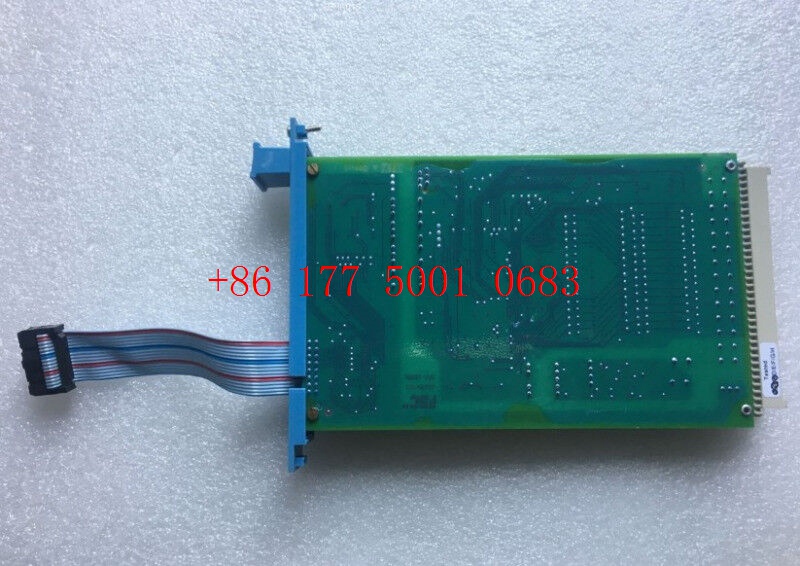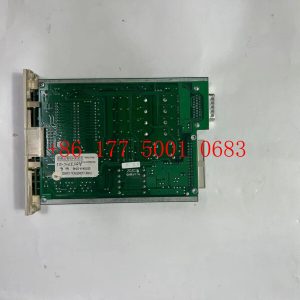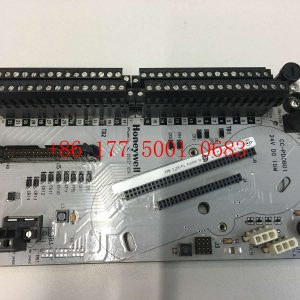Description
hardware flow control. It is an ideal choice in the field of industrial automation.
Design and implementation of variable frequency transmission system based on ABB hardware architecture
introduction
With the increasing development of transmission technology and the increasing demand for actual use, variable frequency transmission systems have been widely used.
As a Fortune 500 company in the world, ABB is a leader in the fields of power and automation technology and has strong capabilities in control
systems, high-voltage, medium-voltage and low-voltage frequency conversion technology and transmission technology. Therefore, this article mainly
relies on ABB”s control, frequency conversion and transmission technology, and uses related hardware products to design and implement the frequency conversion transmission system.
To truly design and implement a usable variable frequency drive system, the entire system must be fully equipped, conveniently operable and
compatible with a wide range of needs, so that it can be used without changing the control method and operation. According to the actual control needs,
that is, combining frequency converters with different performances and variable frequency motors with different speeds or torques to quickly build and realize a variety of control requirements.
1 System design purpose and composition
The design purpose of this system is to control ABB inverters through local and remote control methods and complete 4 independent channels
of closed-loop speed control to drive different test objects to rotate.
The entire control system consists of the following four main components: remote control computer, panel industrial computer (touch screen),
PLC and speed-regulating frequency converter. The system design block diagram is shown in Figure 1.
In order to ensure the accuracy of motor speed control, an encoder module is added. The PLC can obtain the feedback of the rotary encoder in the
frequency converter through the ProfibusDP protocol. The speed control is performed through the frequency converter for internal PID closed-loop control.
2 System hardware implementation
2.1 Control some hardware
The control part of the hardware mainly refers to the sum of hardware that supports operators to use the equipment directly or indirectly and complete
the functions of the equipment. Its main hardware includes computer control terminal, touch screen control terminal, PLC control unit, other auxiliary
circuits and measurement and control components.
2.2 Transmission hardware
The transmission hardware mainly refers to the total number of equipment that can relatively independently perform a complete transmission function.
Its main hardware includes frequency converters, variable frequency motors (configured with rotary encoders as needed) and other auxiliary circuits.
Among them, the selection of motors and frequency converters should be based on the principle of selecting the motor first and then selecting the
frequency converter. details as follows:
First, according to the tangential speed at which the object under test is to complete rotation, select the motor speed according to the following formula:
Secondly, choose based on several other important basic parameters of the motor, such as system hardness, torque, weight, etc
. This system uses ABB”s variable frequency motor.
Finally, select an appropriate frequency converter based on the motor power. In addition, the actual situation of the object being tested must also be taken
into consideration, such as whether the rotating load belongs to the heavy-load usage of the frequency converter, etc.
3Software system
System software includes three major categories in total, namely computer control software, touch screen software and PLC software. Among them, the PLC software, as the
underlying software, is responsible for the interaction with the computer control software and touch screen software on the upper side, and the interaction
with the frequency converter on the lower side. Therefore, from the architecture of the entire software system, it can be defined as a host and slave computer structure.
3.1 System development platform
The software system has two control methods: remote and local. The development platforms for the three major categories of software are Windows operating system,
LabVIEW[4] integrated development environment, CodesysV2.3, and CP400.
3.2 System software architecture
The software of the entire system is divided into three types, namely remote control software, PLC control software and local control software. Among them,
the remote control software runs under the Windows operating system and is developed under the LabVIEW integrated development environment; the PLC control software is
developed under the CodesysV2.3 programming environment; the local control software runs on the touch screen computer and is developed under the CP400 environment.
The relationship between the three software is shown in Figure 2.
https://www.xmamazon.com
https://www.xmamazon.com
https://www.plcdcs.com/
www.module-plc.com/
https://www.ymgk.com
MOOG D136-001-007
MOOG D136-001-008
MOOG D136-001-008a
MOOG D138-002-002
MOOG D136-002-005
D136-002-005 with D138-002-002 dongle
MOOG D136E001-001
MOOG D138-002-002
MOOG G122-824-002
MOOG G123-825-001
MOOG M128-010-A001
MOOG M128-010
MOOG M128-010 M128-010-A001B
MOOG T161-902A-00-B4-2-2A
PROSOFT 5605-RIO-PDPS
PROSOFT 5604-RIO-PDPMV1
PROSOFT 5601-RIO-MCM
PROSOFT 5210-MNET-RIO
PROSOFT 5210-DFNT-RIO
YOKOGAWA SDV144-S33 S2
YOKOGAWA AAI841-H00 S2
YOKOGAWA RS71B
YOKOGAWA SB301
YOKOGAWA VM4D
YOKOGAWA AI841-S00 S2
YOKOGAWA ARK11
YOKOGAWA RB301
YOKOGAWA 701280
YOKOGAWA ST7A
YOKOGAWA UT155-RR/AL-Z S1
YOKOGAWA NL3224AC35-13
YOKOGAWA YTA320-FA4DN/X1/SS25 S3
YOKOGAWA ACM11
YOKOGAWA AFV10D-S41101
YOKOGAWA X1006-3-4-2
YOKOGAWA EN72
YOKOGAWA RM82A
YOKOGAWA MX125-MKC-M10
YOKOGAWA AIP552
YOKOGAWA S9620DC-02
YOKOGAWA CP134E-32
YOKOGAWA ER5B
YOKOGAWA ST6A
YOKOGAWA AS S9421DF-02
YOKOGAWA AFV10D-S41201 S2
YOKOGAWA VM1D
YOKOGAWA MW100-E-1R
YOKOGAWA ACM12
YOKOGAWA AIP501
YOKOGAWA MAC2A
YOKOGAWA AIP588
YOKOGAWA MAC2C
YOKOGAWA AIP581
YOKOGAWA AIP571
YOKOGAWA FLXA21-D-E-D-AA-D1-NN-A-N-LA-N-NN/UM
YOKOGAWA ADV569-P00
YOKOGAWA AIP434
YOKOGAWA ADM51C








Reviews
There are no reviews yet.